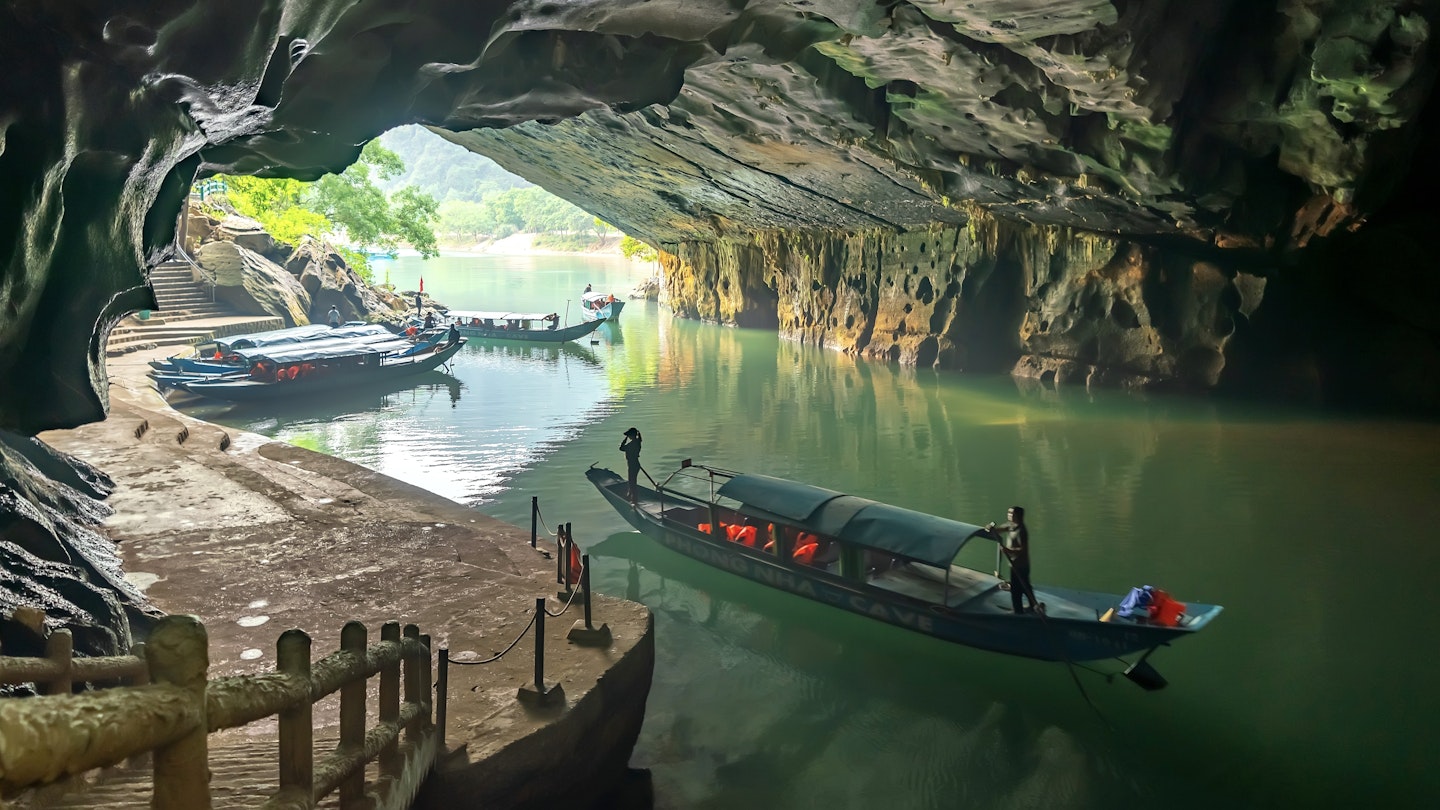Explore Vietnam: A Comprehensive Travel Guide
Gone is the era when Vietnam evoked only images of rice fields, floating markets, and conical-hat-wearing workers. This Southeast Asian powerhouse has today become a destination known for its majestic natural beauty, pristine beaches, unexplored ecological reserves, and delectable cuisines.
Key destinations such as Halong Bay, Hoi An’s Old Town, and Phong Nha-Ke Bang National Park have been recognized by UNESCO as World Heritage sites. Staple Vietnamese foods like banh mi and pho are now commonly included in English-language dictionaries. Moreover, discerning travelers rank Phu Quoc alongside the Maldives and Bali as some of the world’s most beautiful islands.
The Best Time to Visit Vietnam
Given that Vietnam stretches nearly 1650 km (1025 miles) from north to south, weather patterns vary significantly. Therefore, determining the best time to visit depends on your planned destinations and personal preferences. Most visitors will want to avoid the stormy season, particularly in Northern and Central Vietnam, where violent rainstorms can lead to flash floods and road closures. In contrast, the southern storm season (June to November) poses a lesser risk.
The storm season varies throughout the regions:
- North Vietnam: September to November or March and April are ideal times to visit, with cool and dry weather.
- Central Vietnam: Best visited from April to August to enjoy abundant sunshine and minimize exposure to storms.
- South Vietnam: October to April offers smooth travel through the Mekong Delta after the rainy season.
It is advisable to avoid major holidays like Tet (Vietnamese New Year, usually in late January or early February) due to soaring prices and fully booked accommodations.

How Much Time Should You Spend in Vietnam?
To experience the full breadth of experiences in Vietnam, several months would be ideal. However, two weeks can allow you to visit most well-known destinations.
Starting your journey from either Hanoi or Ho Chi Minh City enables you to travel across the country, enjoying a wealth of sights, tastes, and experiences. Notable places include:
- Iconic favorites like Sapa and Halong Bay;
- Cultural and historical hot spots such as Hoi An and Hue;
- River capitals like Can Tho, with the expansive Mekong Delta; and
- The tropical island paradise of Phu Quoc.
If time or budget is limited, consider quick trips of three to four days focusing on specific areas or cities such as Hanoi, Ho Chi Minh City, or Phu Quoc to get a satisfying taste of Vietnam’s attractions.
Getting Around Vietnam
Vietnam has three major international airports: Hanoi, Ho Chi Minh City, and Danang (the gateway to Hoi An and Hue). In addition, Phu Quoc Island features an international airport with direct flights to Singapore, Shanghai, Cambodia, and Laos.
Traveling within Vietnam is reasonably easy and affordable, with options such as trains, buses, and domestic flights. Flights are the quickest way to travel, while buses provide an affordable option that reaches almost everywhere in the country. Notably, a revitalization of train lines makes traveling by train a pleasant way to admire scenic views.
Within cities, cabs, rideshare apps like Grab and Be, and traditional motorbike taxis are readily available. Most Vietnamese cities are walkable and provide a rich experience of local culture, although it’s important to be mindful of tropical heat and urban dust.

Top Things to Do in Vietnam
The plethora of thrilling activities in Vietnam is impressive. However, first-time visitors should prioritize a few key experiences:
- Cruise Halong Bay: This UNESCO World Heritage Site boasts nearly 2000 limestone islands, best enjoyed on an overnight cruise.
- Explore Hoi An: Renowned for its lantern-lit streets and tailor shops, this ancient town seems frozen in time.
- Climb down the Cu Chi Tunnels: Experience this war-era network of tunnels with thrilling night tours now offered.
- Hike the highland trails of Sapa: Known for majestic trails and stunning natural beauty, Sapa serves as a base camp for trekkers.
- Wander the Old Quarter of Hanoi: Dive into the rich street culture amidst a maze of narrow streets.

How Much Money Do You Need for Vietnam?
While luxury resorts and upscale dining are available, Vietnam is well-known for budget travel. Here’s a breakdown of typical costs:
- Hostel room: US$10–15
- Basic room for two: US$10–40
- Self-catering apartment (including Airbnb): US$20–50
- Local bus ticket: US$0.20–1
- Coffee: US$1–3
- Banh mi: US$1–3
- Dinner for two in a local restaurant: US$10–30
- Beer: US$1–2 per can; $3 per liter at local beer halls.

More Tips for Enjoying Vietnam
Bring Lots of Layers, No Matter the Season
Traveling the length of Vietnam means experiencing varied climates. Therefore, packing for different temperatures and weather is advisable.
Respect Local Customs and Etiquette
The Vietnamese value politeness and respect. Dress modestly when visiting temples, and always remove shoes when entering homes.
Stay Away from Tap Water and Choose Your Street Foods Carefully
Stick to bottled water for drinking, and enjoy street food by choosing vendors favored by locals for hygiene.
Prepare for Chaotic Traffic
Traffic laws may seem more like suggestions in Ho Chi Minh City and Hanoi, so exercise caution when crossing roads.
A Few Words in Vietnamese Go a Long Way
Although English is widely spoken, learning basic Vietnamese phrases will show respect and help in connecting with locals.





